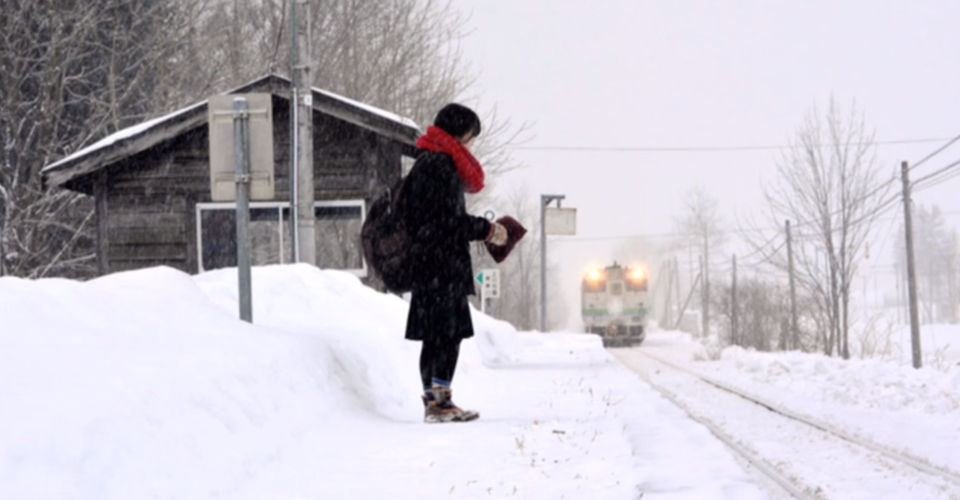The most remote train station in Japan was set to close until they discovered this…
Due to its remote location, there were seldom any trains stopping at the Kyu-Shirataki Train Station on the island of Hokkaido, Japan. The station was scheduled to close down in 2013. When 18-Year-Old Kana Harada’s parents learned that their daughter’s only method of transit to school would end, they asked Japan Railways to keep the station open for their daughter. Much to their surprise, the railway officials agreed to keep the station open for the duration of Kana’s schooling. Not only did the railway offer to stay open, they also tailored the train schedule to fit her school schedule.

A Unique Train Timetable
The schedule at the Kyu-Shirataki Train Station was remarkable. Every morning, promptly at 7:04 am, the train would stop and pick up their lone passenger, Kana, and deliver her to school. At 5:08 PM, Kana would return, marking the trains one and only destination for the day.
On March 25, 2016 Kana rode the train to her and the station’s final stop. This was the day of her high school graduation. To honor the station’s closing, a tent was set up to serve people in attendance with free milk and sweet potatoes. One person even left flowers inside, under a banner that read, “Kyu-shirataki Station, 69 Years, Thank You.”
“I got on and off this train for the last three years, and this station’s presence has become something I have taken for granted,” Kana said. “I do feel sad to think it will disappear.”

The train leaves Kyu-Shirataki one last time
Kana counted on this transit to travel back and forth to school. Having reliable transportation to school gives students access to better opportunities. If Kana did not have this train, she would have had to walk for an hour and a half just to catch an express train from the neighboring line to travel to and from school each day.
Even with the train stop in her rural town, she still had a difficult time finding trains that fit with her school schedule. In fact, there were only two trains that coincided with school’s timing. Kana’s schedule was controlled by the trains’ arrival and departure times. She missed the chance to stay after school and participate in extracurricular activities. Often, she found herself running out of school just to catch the last train.
This wasn’t the most ideal commute for Kana, but she realized the importance of her education, and was grateful to the train station for keeping her connected to it, and to the Japanese Government for making education a top priority.
Investing in the People
People are praising the Japanese government for making education a top priority. Every citizen matters, and no child truly is left behind. Japan sees the education of its young people as a “long-term investment” that will be repaid when they join the workforce. If you think the expense of keeping the Kyu-Shirataki train station running was costing the Japanese government a lot of money, you’re right. For Japan Railways, anything they can do to support the education of young people, even if it’s just one, is far more important than cutting stops to save money.
Japan’s government has shown that they are responsible and committed to the people, and that education and rejuvenation will help the country through the struggles they have and will face. Japanese citizens have been quick to pick up on this trend – when the government gives to the people in relevant ways, people want to give back to their government in meaningful ways.














